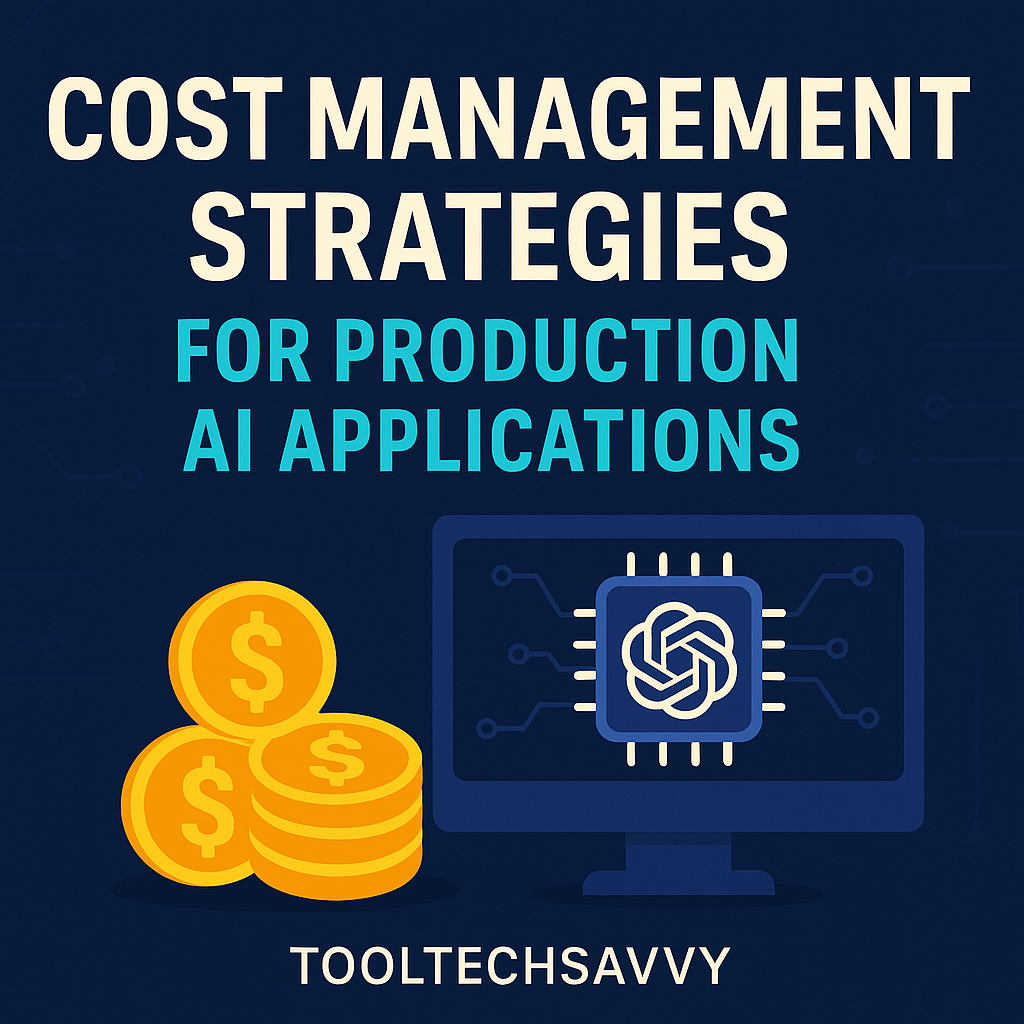AI workloads aren’t like traditional applications. They depend on compute-heavy models, data pipelines, and APIs that bill per request.
Without clear oversight, you could easily overspend on inference calls, storage, or model fine-tuning.
Think of cost control as part of AI architecture design. In fact, understanding the basics of model efficiency can help you build smarter workflows — as covered in Get Better AI Results: Master the Basics of AI Architecture.
1. Choose the Right Model for the Right Task
Bigger models aren’t always better. Using GPT-4 for every query is like hiring a data scientist to do spell-check.
Instead, match the model to the job:
- Use lightweight models like gpt-4o-mini or Claude Instant for quick tasks.
- Reserve high-capacity models for content generation, reasoning, or creative prompts.
To better understand how to choose wisely, see How to Choose the Right AI Model for Your Workflow.
2. Optimize Your Prompts
Every token costs money. Long prompts mean higher bills.
- Use concise instructions and define clear roles — e.g., “You are a summarizer”.
- Chain prompts instead of sending massive context windows.
A great reference is 5 Advanced Prompt Patterns for Better AI Outputs, where you’ll learn how to structure prompts efficiently while maintaining accuracy.
3. Cache and Reuse Results
Why pay for repeated computations?
Caching lets you store previous results (like embeddings or generated responses) and reuse them later — reducing redundant API calls.
Explore caching, batching, and rate-limiting in Optimizing AI Workflows: Batching, Caching, and Rate Limiting. These strategies can cut inference costs by up to 40% in production.
4. Batch API Requests
If your workflow sends multiple small API calls, combine them into batches. Most APIs (including OpenAI and Anthropic) let you process multiple inputs in a single request.
Batching not only reduces latency but also lowers request overhead. It’s especially powerful in large data pipelines or automation tasks — as explained in How to Build Complex Workflows with AI Copilots and Zapier.
5. Use Vector Databases Efficiently
When storing embeddings, you pay for both storage and retrieval.
To manage costs:
- Use open-source tools like ChromaDB for smaller projects.
- Switch to scalable options like Pinecone only when you need production-grade performance.
Check out Vector Databases Explained: ChromaDB, Pinecone, and Weaviate to decide which fits your budget and workflow.
6. Monitor API Usage and Set Limits
Track your daily API calls and spending dashboards. Most platforms let you set soft limits or alerts to avoid unexpected charges.
Additionally, tools like Zapier, n8n, and Notion integrations can log usage automatically — as shown in Notion, Zapier & ChatGPT: How to Create a Free AI Workflow.
7. Balance In-House vs. Cloud Inference
Cloud APIs are flexible but costly at scale. If you have consistent workloads, consider local inference using frameworks like Ollama or LM Studio.
They let you run smaller LLMs on-premise — saving API costs while maintaining speed. You can compare both in Ollama vs. LM Studio: Which Is Best for Local LLMs?.
8. Automate Cost Tracking
Use scripts or AI copilots to automatically track and visualize spending. You can even integrate APIs with Google Sheets or Notion for cost dashboards.
If you’re new to automation, start with How to Use ChatGPT and Zapier to Automate Your Content Calendar. The same logic applies to cost reports — it’s all about automation and visibility.
9. Regularly Audit and Tune Models
Model drift, unused endpoints, or stale fine-tunes can inflate your costs silently. Schedule monthly audits to:
- Remove unused models
- Re-evaluate prompt complexity
- Benchmark inference latency vs. cost
This continuous optimization mindset reflects what we covered in The Growth Mindset Approach to Learning Machine Learning.
10. Educate Your Team on Token Awareness
Cost control isn’t just a technical challenge — it’s cultural.
Teach everyone how tokenization works and why shorter context = lower cost.
If your team is new to these concepts, Beginners Guide to AI Terms You Actually Need to Know is a great internal resource to link.
Bonus: Use Multi-Modal AI Strategically
While multi-modal models (text + vision + audio) are powerful, they’re also resource-intensive. Run them selectively.
For insight into how hybrid AI is evolving — and what to expect next — check out The Future Is Hybrid: Everything You Need to Know About Multi-Modal AI.
Final Thoughts
Cost management for AI isn’t about cutting corners — it’s about strategic efficiency.
By optimizing prompts, batching calls, caching responses, and matching the right model to the task, you can reduce expenses while improving performance.
Remember: scaling AI sustainably means being smart with both tokens and tactics.
To dive deeper into advanced optimization techniques, read 7 Proven ChatGPT Techniques Every Advanced User Should Know and Optimizing AI Workflows: Batching, Caching, and Rate Limiting.



